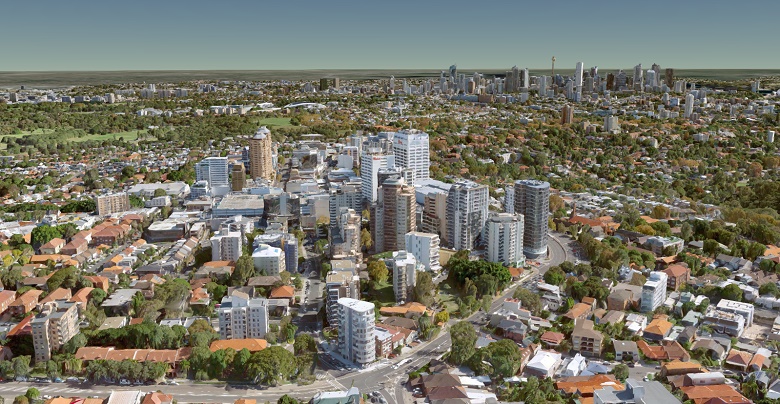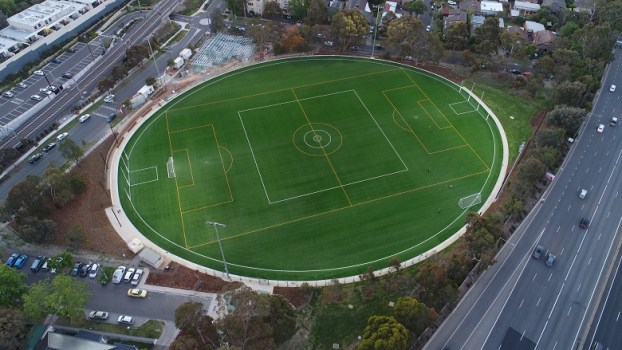
Faced with growing urban populations, councils are looking to technology to improve oversight of residential and commercial development.
The competing demands of providing sufficient housing and amenities while maintaining essential public spaces mean urban growth is a politically fraught issue for many councils.
With an election approaching in NSW, councils have largely been left in the vice over growth in localities, with the State Government “vacating the field,” says Chris Johnson, CEO of the Urban Taskforce and former NSW architect.

Mr Johnson says local governments increasingly face divisions within their electorates over politically-fraught high rise developments and the need for more affordable housing, with many councillors “deliberately campaigning” on the issue.
“There is a tension, particularly in Sydney, with the amount of development going on,” he tells Government News.
“Some call it over-development. I think it is more (of) a swing away from detached housing in suburbs to apartment living in taller buildings,” he said.
Sydney is at the forefront of these changes in city living style, which have come into focus ahead of the state election, Mr Johnson said.
The growth of high-rise developments, which make up around a third of developments in large cities like Sydney, is particularly controversial for older, conservative voters, Mr Johnson says, and could potentially create a political shift in electorates with many high-rise developments.
“As a lot more apartments are developed across different electorates, the voting pattern could swing to a more left-wing position, and those on the right would be very concerned about that,” he said.
App boosts community engagement
With many communities divided, managing public feedback and scrutinising development projects is a persistent challenge for councils.
Many are leveraging technology to streamline and improve development applications and provide residents with greater oversight of the progress.
In Queensland’s Sunshine Coast Council, an Australian-first app was launched allowing residents to track developments in real time.
The council launched the app in October last year, enabling users to navigate, visualise, track and be alerted to development applications in their surrounding areas, dating back to 2007.
The app also enables users to utilise advanced search capabilities, including filtering search results and pinning areas of interest, while also being automatically updated onpotential developments in areas of interest.
As Government News reported late last year, Development.i has substantially improved council’s ability to manage the 40,000 development inquiries it receives each year, with the app receiving 150,000 sessions and 950,000 site visits a year.
3D modelling to optimise planning
Waverley Council in Sydney has also been exploring innovations to manage developments through the use of 3D modelling to guide development assessments.
As Government News reported in January, the council has been using 3D modelling to visualise high-rise developments in the context of surrounding urban environments.
The technology also enables council to improve engagement with communities by showcasing proposed developments.
Peter Monks, director of Waverley Futures, told Government News the use of 3D modelling had allowed council to manage the pace of development.
“A model that shows what a development looks like in terms of height, overshadowing, privacy or loss of view corridor is useful to get a better appreciation of what is an appropriate standard to maintain a liveable neighbourhood,” he said.
Reducing the administrative burden
Aside from technology, experts argue that councils can also significantly reduce administrative work around developments by engaging ratepayers earlier on in the process.
Roberta Ryan, director of the Institute for Public Policy and Governance says councils should be engaging with communities at the ‘rule-setting’ or strategic planning stage of developments, as opposed to just the approval phase.
“There’s a lot a lot to be done with councils investing more at the front-end of engaging with communities. There is much higher levels of community acceptance for development applications coming through based on those rules,” she tells Government News.
Technology that helps councils engage with citizens is also a useful way to help improve development oversight, and in turn reduce administrative burden within the process, she says.
“The more councils can do to find better ways to communicate with people around development outcomes, the better,” she said.
Comment below to have your say on this story.
If you have a news story or tip-off, get in touch at editorial@governmentnews.com.au.
Sign up to the Government News newsletter
Most read
Scathing report finds little has changed at PwC
Qld council welcomes progress on massive battery system
‘Local’ procurement turns out not to be so local, committee hears
Another report finds local government falling down on cyber security
MoG changes see regions, investment return to NSW Premier’s Department






Sue Phillips on: 15 councils participate in SA emissions reduction trial
Garth Daddy on: War memorial contracts fudged, audit finds
Roger Buhlert on: New VLGA appointment vows to lift governance standards